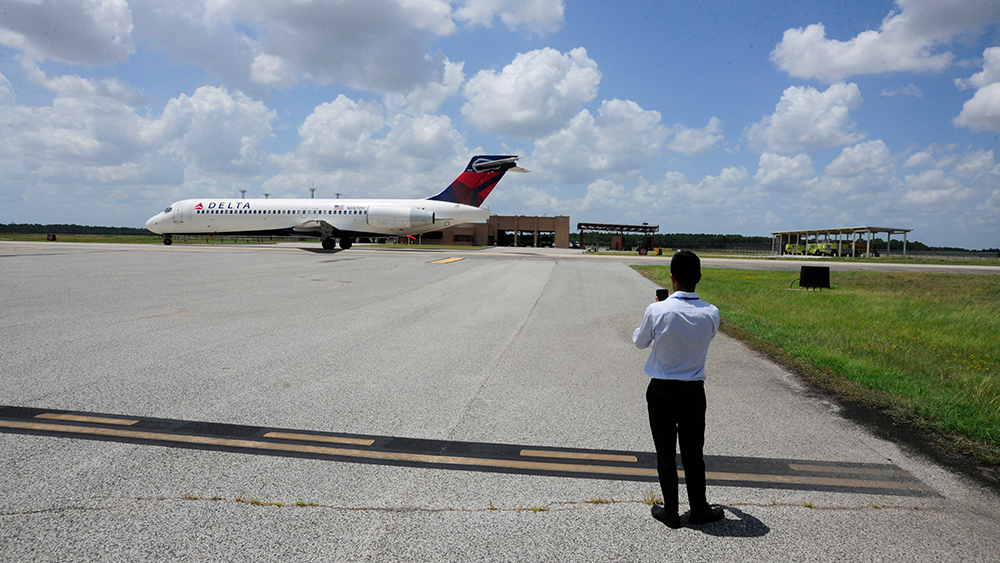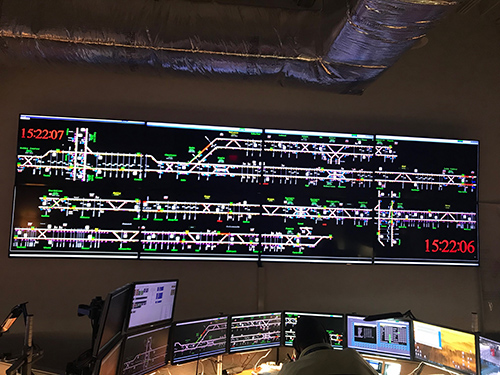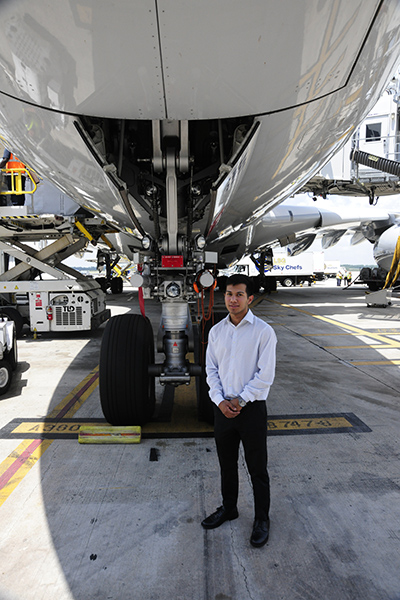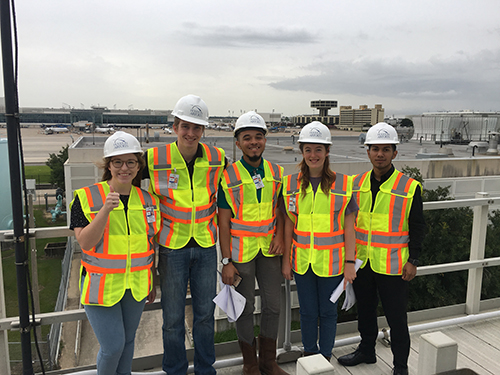
Three Texas A&M University industrial and systems engineering students interned with the Houston Airport System (HAS) this summer. Giovanni Fuentes worked in the safety and emergency management department, while Breanna Bassett and Chris Martin worked in the infrastructure control department.
By investing in the workforce of the future through its summer management intern program, the HAS introduces college students to the exciting world of aviation and air travel while giving them the opportunity to be part of hands-on projects that allow them to develop the job skills they need to be successful in the field.
Fuentes spent his summer assisting the emergency management coordinator with the revision of the HAS’s continuity of operations plan. "My most memorable experience as an intern was meeting with HAS directors across different departments, such as the Houston Police and Fire departments, to discuss safety drills that would take place in the event of an active shooter on the skyway," said Fuentes.
As an industrial and systems engineering student I am motivated by the overabundance of problems that our world faces.

He appreciated the opportunity to work on things of great impact for travelers, including helping his department create a detailed plan to relocate every other department in the event of an emergency, allowing for airport services to continue. "As an industrial and systems engineering student I am motivated by the overabundance of problems that our world faces," said Fuentes.
Bassett and Martin, members of the infrastructure controls department, assisted project managers with ongoing construction projects. Their tasks included visiting construction sites, ensuring regulatory compliance for airport construction projects, calculating costs, and creating spreadsheets to analyze project data and assess risk.
"I collaborated with two other Texas A&M interns on a project," said Martin. "We created a spreadsheet to track project schedules each month and the metrics we designed are being utilized in project briefings. The spreadsheet monitors project milestones, analyzes shortcomings and creates metrics based on how many tasks are completed each month." The tool can also assess project progress annually.

Bassett's favorite internship memory involved a rogue tour guide who took them to view the airfield in action. "For the next hour we drove around the airfield and saw all the activity that the average traveler has no idea about," said Bassett. "We saw airplanes being maintenanced, cargo being unloaded from a UPS plane using automatic conveyor belts, airplane food trucks stocking passenger planes and all the baggage being carted hundreds of feet in all directions. We happened to be about 80 yards away from a Lufthansa A380 as it pulled away from the gate and taxied to the runway. I knew that a lot happened at the airport, but at that the moment, I realized how critical it is that all these operations run smoothly. It's incredible to feel like a small piece of a million-piece puzzle."
The HAS internships allowed the students to directly apply numerous skills and knowledge they learned from their classes. "When working with the data, I was able to create Excel dashboards, macros and UserForms by using Visual Basic Applications," said Fuentes. "I was also able to engage in data mining that allowed me to forecast safety incidents for the Houston Airport System."
As part of the internship, they also learned how to navigate professional communications. "This was my first experience being a part of an important issue where many individuals disagreed on specific topics but still managed to be able to exchange ideas respectfully to each other," said Fuentes. "I learned the importance of delivering your ideas without creating hostile or tense situations."

As part of the internship, they also learned how to navigate professional communications. "This was my first experience being a part of an important issue where many individuals disagreed on specific topics but still managed to be able to exchange ideas respectfully to each other," said Fuentes. "I learned the importance of delivering your ideas without creating hostile or tense situations."
The Houston Airport System internships influenced the students to explore unexpected paths. "After seeing the operations of working at an airport," said Fuentes, "I realized how many opportunities for growth there are! I believe working in a fast-paced environment that has millions of passengers flying daily can instill passion in the workplace."
"The internship gave me good exposure to how businesses and airports are operated," said Martin, who also learned about the importance of organization, communication and contract agreements when managing projects. "I can now see myself applying for manager positions in the future."

The Aggie Network played a vital role in the landing of their internships. "I wouldn't have known about this position if not for an email from an industrial and systems engineering faculty member," said Bassett. Fuentes believes that the Aggie Network helped when he was applying due to the reputation of Texas A&M.
Fuentes, Bassett and Martin believe other Texas A&M industrial and systems engineering students could benefit from the internship, particularly those that would like to test their technical knowledge or explore a new career path.
"This internship was a wonderful experience for me, and I would certainly recommend it to other Aggies, especially if they live in the greater Houston area," said Bassett. "Everybody wants to show you around and help you understand everything that's happening. There are 35 interns, so there's a lot of opportunity to network with peers as well as professionals."